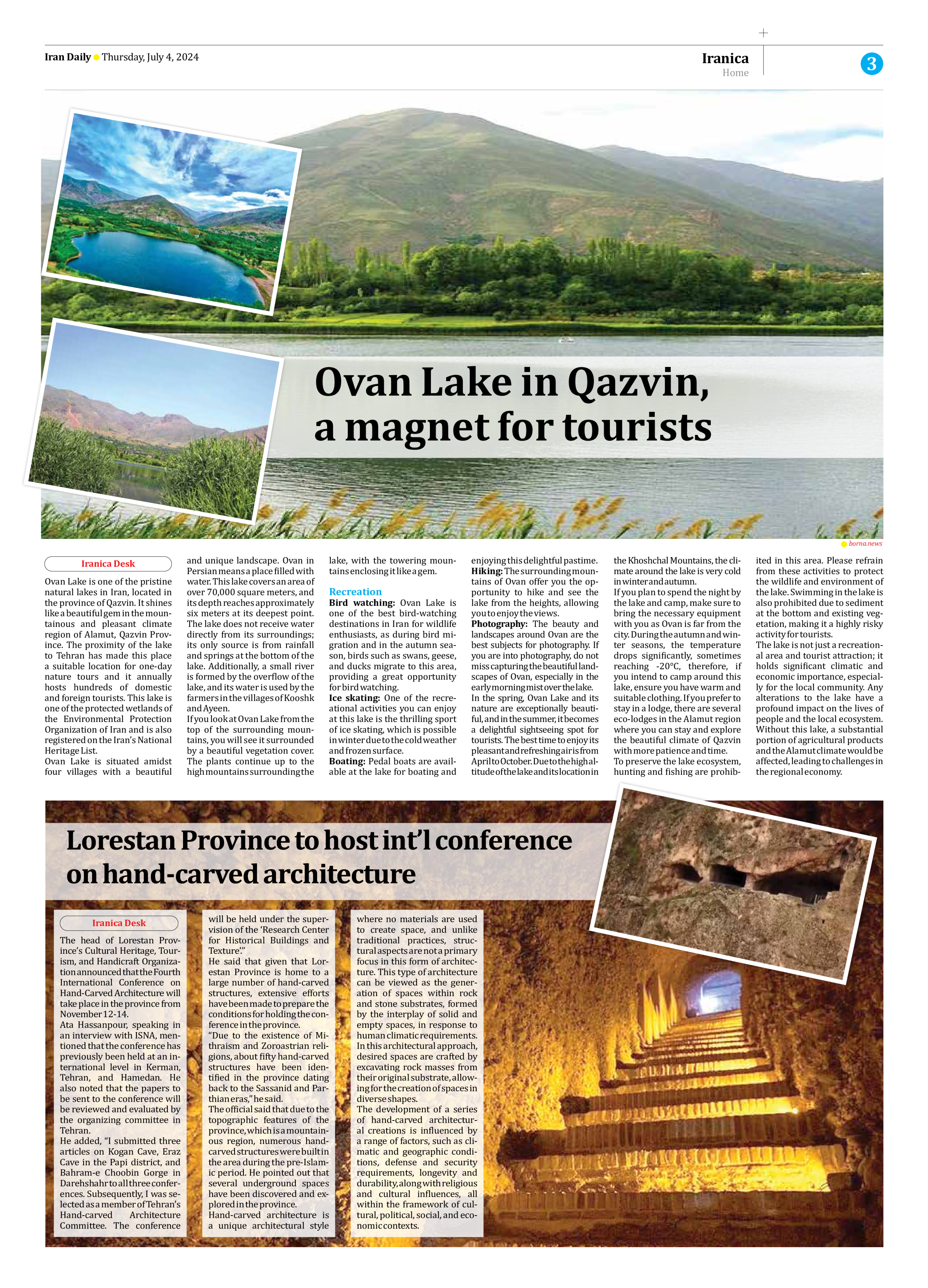
Ovan Lake in Qazvin, a magnet for tourists
Ovan Lake is one of the pristine natural lakes in Iran, located in the province of Qazvin. It shines like a beautiful gem in the mountainous and pleasant climate region of Alamut, Qazvin Province. The proximity of the lake to Tehran has made this place a suitable location for one-day nature tours and it annually hosts hundreds of domestic and foreign tourists. This lake is one of the protected wetlands of the Environmental Protection Organization of Iran and is also registered on the Iran’s National Heritage List.
Ovan Lake is situated amidst four villages with a beautiful and unique landscape. Ovan in Persian means a place filled with water. This lake covers an area of over 70,000 square meters, and its depth reaches approximately six meters at its deepest point. The lake does not receive water directly from its surroundings; its only source is from rainfall and springs at the bottom of the lake. Additionally, a small river is formed by the overflow of the lake, and its water is used by the farmers in the villages of Kooshk and Ayeen.
If you look at Ovan Lake from the top of the surrounding mountains, you will see it surrounded by a beautiful vegetation cover. The plants continue up to the high mountains surrounding the lake, with the towering mountains enclosing it like a gem.
Recreation
Bird watching: Ovan Lake is one of the best bird-watching destinations in Iran for wildlife enthusiasts, as during bird migration and in the autumn season, birds such as swans, geese, and ducks migrate to this area, providing a great opportunity for bird watching.
Ice skating: One of the recreational activities you can enjoy at this lake is the thrilling sport of ice skating, which is possible in winter due to the cold weather and frozen surface.
Boating: Pedal boats are available at the lake for boating and enjoying this delightful pastime.
Hiking: The surrounding mountains of Ovan offer you the opportunity to hike and see the lake from the heights, allowing you to enjoy the views.
Photography: The beauty and landscapes around Ovan are the best subjects for photography. If you are into photography, do not miss capturing the beautiful landscapes of Ovan, especially in the early morning mist over the lake.
In the spring, Ovan Lake and its nature are exceptionally beautiful, and in the summer, it becomes a delightful sightseeing spot for tourists. The best time to enjoy its pleasant and refreshing air is from April to October. Due to the high altitude of the lake and its location in the Khoshchal Mountains, the climate around the lake is very cold in winter and autumn.
If you plan to spend the night by the lake and camp, make sure to bring the necessary equipment with you as Ovan is far from the city. During the autumn and winter seasons, the temperature drops significantly, sometimes reaching -20°C, therefore, if you intend to camp around this lake, ensure you have warm and suitable clothing. If you prefer to stay in a lodge, there are several eco-lodges in the Alamut region where you can stay and explore the beautiful climate of Qazvin with more patience and time.
To preserve the lake ecosystem, hunting and fishing are prohibited in this area. Please refrain from these activities to protect the wildlife and environment of the lake. Swimming in the lake is also prohibited due to sediment at the bottom and existing vegetation, making it a highly risky activity for tourists.
The lake is not just a recreational area and tourist attraction; it holds significant climatic and economic importance, especially for the local community. Any alterations to the lake have a profound impact on the lives of people and the local ecosystem. Without this lake, a substantial portion of agricultural products and the Alamut climate would be affected, leading to challenges in the regional economy.







